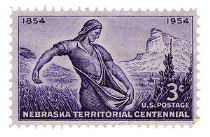Extension, Cooperative

Nebraska Agricultural Experiment Station: Historical Research Bulletins
Date of this Version
11-1930
Document Type
Article
Citation
Swenk, M.H. (1930) The food habits of the ring-necked pheasant in central Nebraska (Research Bulletin: Bulletin of the Agricultural Experiment Station of Nebraska No. 50)
Abstract
Pheasants, including the Chinese and the so-called English pheasants, with their hybrid the ring-necked pheasant, have been introduced and established in a large area in the northern United States during the past 50 years. During the past 15 years continued importations of these birds into Nebraska, together with the rapid increase of those already established, have built up a large pheasant population in the state, estimated at more than a million birds. They have especially thrived in a block of 16 counties in east-central Nebraska. Protection was afforded them until 1927, when short open seasons were permitted in the fall in certain counties that were well stocked. In these counties with a relatively high pheasant population the economic status of the pheasant has become a controversial matter, the bird having both friends and enemies among the farmers. Because of the contradictory claims concerning its food habits, in 1929 a study of the year's food of the bird was made in the heart of the region from which the bulk of the complaints of injury to crops have emanated. This study was based on the crop and gizzard contents of 50 male and 50 female pheasants, taken in varied habitats, 8 each month, except in May and June when 10 were taken.


Comments
ISSN 0097-1381